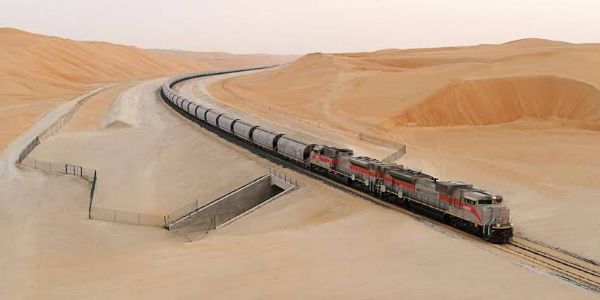NB Explains | All about India-Middle East-Europe mega economic corridor; Know why it's important
The project, announced by Prime Minister Narendra Modi on the sidelines of the ongoing G20 Summit. The leaders of India, USA, UAE, Saudi Arabia, France, Germany, Italy and the European Union Commission have signed the Memorandum of Understanding to begin the construction of the India-Middle East-Europe Economic Corridor.
Total Views |
With an aim to counter China’s Belt and Road Initiative (BRI), India, the U.S., Saudi Arabia, and the European Union announced a historic mega corridor deal, " India-Middle India-Middle East-Europe shipping and railway connectivity corridor."

The initiative will reshape the trade route between the Gulf, Europe and South Asia, connecting them by rail and sea links. The project, announced by Prime Minister Narendra Modi on the sidelines of the ongoing G20 Summit.
The project, announced by Prime Minister Narendra Modi on the sidelines of the ongoing G20 Summit. The leaders of India, USA, UAE, Saudi Arabia, France, Germany, Italy and the European Union Commission have signed the Memorandum of Understanding to begin the construction of the India-Middle East-Europe Economic Corridor.
About the corridor's
The rail and shipping corridor is part of the Partnership for Global Infrastructure Investment (PGII) — a collaborative effort by G7 nations to fund infrastructure projects in developing nations. PGII is considered to be the bloc’s counter to China’s Belt and Road Initiative.
#BREAKING ⚡⚡
— Vivek Singh (@VivekSi85847001) September 9, 2023
Leaders of #India , USA, Saudi Arabia & UAE to unveil a Multi-billion dollars Mega Rail-Port Connectivity Deal on the sideline of #G20SummitIndia 🇮🇳
After Completion of this Project, it will be one of World most important Rail Project ever 🇮🇳🇺🇸🇸🇦🇦🇪 #G20India pic.twitter.com/kt6Sn3BGUX
This is a historic and first-of-its-kind initiative on cooperation on connectivity and infrastructure involving India, UAE, Saudi Arabia, EU, France, Italy, Germany and the US.
As per the report's the India-Middle East-Europe Economic Corridor will consist of two separate corridors — the Eastern Corridor, connecting India to West Asia/Middle East, and the Northern Corridor, connecting West Asia/Middle East to Europe. The project will involve transit by ship between India and Saudi Arabia, followed by a rail link to the UAE and likely to Jordan from where the shipment will move by sea to Turkey and further by rail.
🚨 The new global supply chain route of the world, India-Middle East-Europe economic corridor. Alternative to BRI as experts say. pic.twitter.com/WG5aZ1uqGX
— Indian Tech & Infra (@IndianTechGuide) September 10, 2023
The project will aim to enable greater trade among the involved countries, including energy products.
The corridor will include a rail link as well as an electricity cable, a hydrogen pipeline and a high-speed data cable, according to a document prepared by European Commission President Ursula von der Leyen. The document also called the project “a green and digital bridge across continents and civilizations.”
A game-changer
Speaking to private news channel, Jon Finer, President Biden’s principal deputy national security adviser, gave three major reasons for developing the corridor. First, it would increase prosperity among the countries involved through an increased flow of energy and digital communications.
Second, the project would help deal with the lack of infrastructure needed for growth in lower- and middle-income nations.
And third, it could help “turn the temperature down” on “turbulence and insecurity” coming out of the Middle East, Finer said, according to AP.